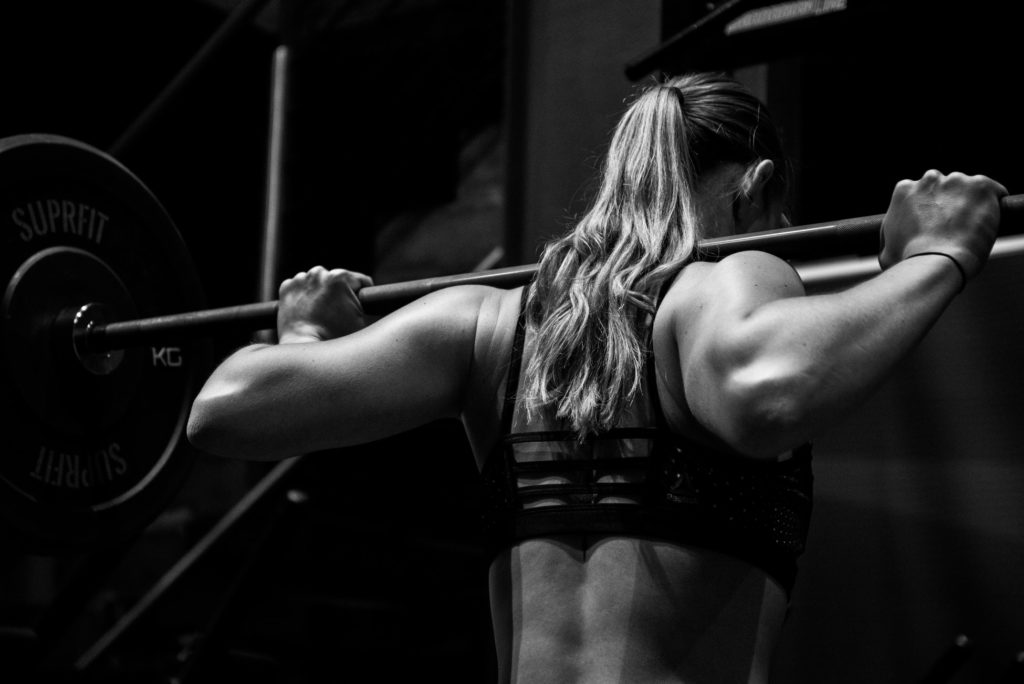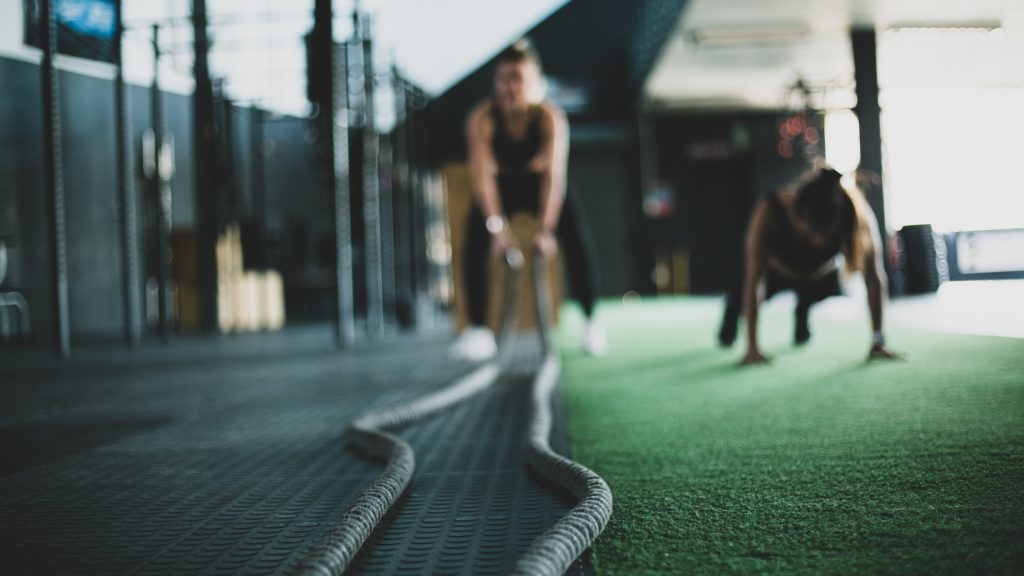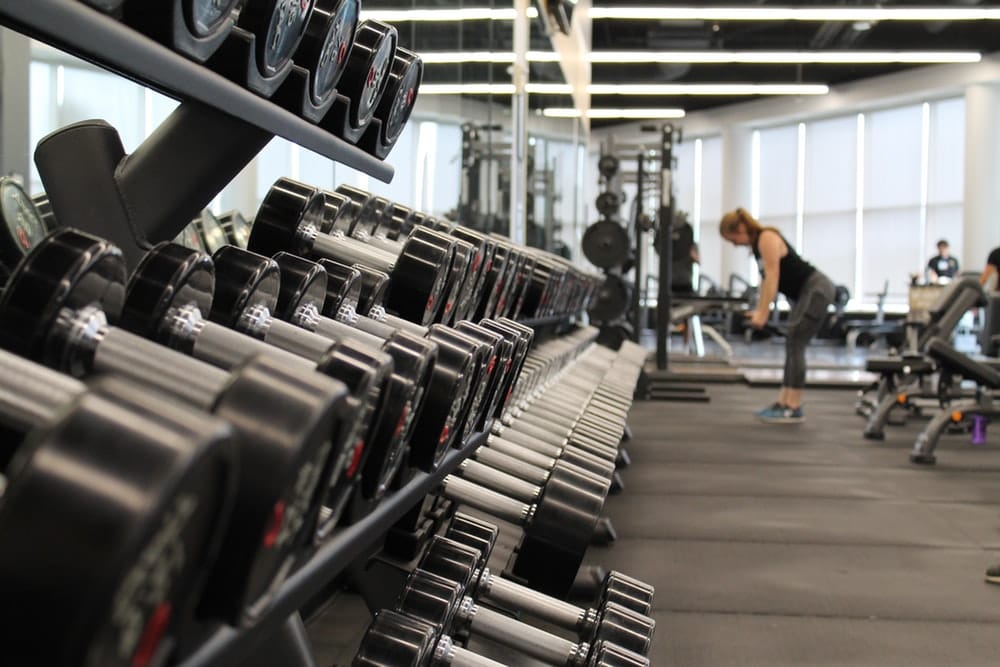Finding time for fitness in a schedule crammed with work commitments, socialising, and family events can be difficult for some, and perhaps a little daunting—especially if it’s built up over time. What’s more, with the worldwide gym and fitness facility closures across the globe, training has been restricted to home workouts and outdoor runs. With gyms and centres slowly reopening, many of us are heading back out to work on our fitness goals after some time out. David Markham from Hybrid Personal Training (MMA & Fitness) tells us a few things to consider when getting back into training.

Choosing your exercises & weights
When starting training again we need to re-train our fundamental movement patterns, especially squats, lunges, hip hinges, and pushing and pulling movements.
Initially, instead of jumping straight back into our big compound lifts it would be beneficial to regress some of these exercises, to allow time for our bodies to adjust back into training. For example, instead of diving straight into a barbell back squat, regress this to a front foot elevated split squat instead. This is a great way of re-training your movement patterns while obtaining a range of motion around the ankle, knee and hip, without applying stress to the body as much a full back squat would.
Once you’ve selected the exercises, focus on the load, accumulating volume as opposed to high intensity. The reason? Accumulating volume is key for tendon and ligament integrity, due to the fact that joints and ligaments take longer to recover from lifting heavy than our muscles do. Building this base through volume is key to providing a platform for our muscles to grow and produce force later down the line. All of the above factors, mean the accumulation phase helps us avoid injury and prevent overtraining after we’ve taken a break or are new to training.
See also: Fighting Fit: Nadir Thami From Hybrid MMA On Self Defence, Boxing & Competition
Start from the bottom up: conditioning
Similar to our resistance training, when retraining our energy systems for conditioning it is appropriate to start from the bottom up, starting with aerobic, anaerobic and then alactic. Depending on the duration and intensity of your effort while exercising, your body will draw different amounts of energy from these systems.
To simplify this in terms of activity time frames:
- Aerobic: activities which last for hours (e.g. walking, moving, swimming, being alive)
- Anaerobic: activities roughly lasting 40-60 seconds (e.g. weight training, sparring, sprinting, HIIT training)
- Alactic: activities lasting less than 10 seconds (e.g. short bursts of sprints for 6-10s followed by a full minute rest)
With all of our energy systems we have both power (how much force we can produce in that zone) and capacity (how long we can stay in a zone for).
When we train, it’s important to first build power, and then work on capacity otherwise you just end up producing a less aerobically powerful athlete less powerful for longer. This being efforts of 90+ seconds around 70-80% of our max heart rate with a work to rest ratio of 1:1, with repeatable and sustainable efforts.
Once we have built our aerobic base we then can move to our anaerobic and alactic energy systems.

Patience is a virtue
The biggest thing to remember when returning to training is to be patient. You may notice an initial loss of strength but this will return very quickly thanks to muscle memory. The adaptations you made to your body from previous training will still be there, but just dormant and needing to be awakened. Here are some key considerations to think about when getting back into the gym:
- Range of Motion (ROM): It is important to focus on full ROM around joints rather than moving as much weight as possible. Focusing on ROM is a great way to increase volume within your accumulation phase, and also increase blood flow and circulation around joints.
- Reps in Reserve: This principle simply means that given the weight you are using, try and leave 2-3 reps in the tank (i.e. don’t keep going until you are about to fail at the exercise). This will have very similar muscle-building benefits (hypertrophy) as going to failure, but is safer and will help with our acute loading.
- Acute Vs Chronic Loading: This is a ratio we use to determine athletes’ load during a period of training. We compare their acute load (fatigue) over a period of 1-7 days with their chronic load (fitness) over a period of 4 weeks (mesocycle). This helps determine how much load an athlete should be performing and if their load needs to be tapered to avoid injury. This is something coaches and trainers should be conscious of with their athletes.
See also: 5 Ways To Stay Motivated On Your Wellness Journey In 2020
Proper preparation & recovery
When we return to training we will experience some muscle soreness, but there are many tools we can use to mitigate this and help to recover in between training sessions. This can be most easily achieved by incorporating extended warm-up and cool down pre and post-training sessions.
Appropriate warm-ups and exercise preparation are key components of our sessions at Hybrid, consisting of glute, core and conditioning. Extra time spent here is key in allowing our body to perform at its highest capacity and reduce the risk of injury through increased blood flow and lubrication of the joints.
A cool down is often overlooked in training programmes, due to time constraints, but can be beneficial to your recovery. After we perform exercise our body is in a ‘sympathetic state’ where the nervous system releases hormones to accelerate our heart rates. It is important we return the body to its natural ‘parasympathetic state.’ This can be achieved easily by multiple methods such as walking or stretching after your session for 5-10 minutes.
Cooling down with diaphragmatic breathing
Use of diaphragmatic breathing after training is another great way to return to a parasympathetic state after exercise:
- Lay on your back and bring your knees up. Keep your feet flat on the floor.
- Place one hand on your chest and one hand on your belly, close your eyes
- Start taking deep breaths in and out of your nose
- Focus on ‘belly breathing’ and ensuring that the hand on your belly is moving, rather than the hand on your chest.
- Repeat for anywhere between 1-5 mins.
Throughout the process try to relax as much as possible. Be present and aware of each breath.
Nutrition & Hydration
Finally, nutrition and hydration away from training will have a huge effect on our recovery between sessions. Eat plenty of wholefoods including fruit and veg (dark leafy greens), lean protein sources, and stay away from processed foods. This will fuel your training and help avoid feeling bloated and lethargic. Hydration levels must also be maintained during and in between training, drops in hydration levels can have a serious impact on recovery and training performance.
See also: Retreat Recipes: Amanjiwo’s Herbal Afternoon Tea

What it comes down to
When starting training again, take it easy. Don’t be too eager to jump back in where you left off! Take time to rebuild your base and the rest will follow. Be patient with your body and have realistic expectations of where you’re at, this may take anywhere from 4-6 sessions upward to get back to where you were—but it will come back. Prioritise your recovery during after and in between sessions. Do what you can with what you have whilst you’re away from the gym—if that’s body weight exercises, runs or hikes, they will all help maintain your strength and cardiovascular performance so that you can hit the ground running when you return to the weight room, rugby pitch, MMA mat or whatever your pursuit may be.
If you are interested in learning more about improving your health and fitness, contact Hybrid MMA at info@hybridmmafit.com.



